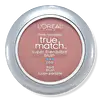What's inside
What's inside
 Key Ingredients
Key Ingredients

 Benefits
Benefits

No benefits
 Concerns
Concerns

 Ingredients Side-by-side
Ingredients Side-by-side

Hydrogenated Polyisobutene
EmollientIsononyl Isononanoate
EmollientBis-Diglyceryl Polyacyladipate-2
EmollientDimethicone
EmollientMica
Cosmetic ColorantCera Microcristallina
Emulsion StabilisingTrihydroxystearin
Skin ConditioningSilica
AbrasiveSynthetic Sapphire
Copernicia Cerifera Wax
Ozokerite
Emulsion StabilisingDimethicone/Vinyl Dimethicone Crosspolymer
Skin ConditioningPhenoxyethanol
PreservativeTriethoxycaprylylsilane
Tocopheryl Acetate
AntioxidantCaprylyl Glycol
EmollientCI 77499
Cosmetic ColorantCI 15850
Cosmetic ColorantCI 77891
Cosmetic ColorantIsododecane
EmollientBoron Nitride
AbsorbentDiisostearyl Malate
EmollientPentaerythrityl Tetraisostearate
EmollientMagnesium Myristate
Polyethylene
AbrasiveC30-45 Alkyl Dimethicone
Skin ConditioningNylon-12
Aluminum Starch Octenylsuccinate
AbsorbentRicinus Communis Seed Oil
MaskingSodium Hyaluronate
HumectantDiethylhexyl Syringylidenemalonate
Skin ProtectingCaprylic/Capric Triglyceride
MaskingHydrogenated Castor Oil
EmollientCI 45410
Cosmetic ColorantCI 77491
Cosmetic ColorantMagnesium Stearate
Cosmetic ColorantCI 77492
Cosmetic ColorantCI 16035
Cosmetic ColorantHydrogenated Polyisobutene, Isononyl Isononanoate, Bis-Diglyceryl Polyacyladipate-2, Dimethicone, Mica, Cera Microcristallina, Trihydroxystearin, Silica, Synthetic Sapphire, Copernicia Cerifera Wax, Ozokerite, Dimethicone/Vinyl Dimethicone Crosspolymer, Phenoxyethanol, Triethoxycaprylylsilane, Tocopheryl Acetate, Caprylyl Glycol, CI 77499, CI 15850, CI 77891, Isododecane, Boron Nitride, Diisostearyl Malate, Pentaerythrityl Tetraisostearate, Magnesium Myristate, Polyethylene, C30-45 Alkyl Dimethicone, Nylon-12, Aluminum Starch Octenylsuccinate, Ricinus Communis Seed Oil, Sodium Hyaluronate, Diethylhexyl Syringylidenemalonate, Caprylic/Capric Triglyceride, Hydrogenated Castor Oil, CI 45410, CI 77491, Magnesium Stearate, CI 77492, CI 16035
Talc
AbrasiveDimethicone
EmollientNylon-12
Polymethylsilsesquioxane
Cetyl Dimethicone
EmollientMagnesium Stearate
Cosmetic ColorantTrimethylsiloxysilicate
EmollientPhenoxyethanol
PreservativeMethylparaben
PreservativeSilica
AbrasiveEthylparaben
PreservativePropylparaben
PreservativeIsobutylparaben
AntimicrobialButylparaben
MaskingMica
Cosmetic ColorantCI 77891
Cosmetic ColorantCI 77491
Cosmetic ColorantCI 77492
Cosmetic ColorantCI 77499
Cosmetic ColorantCI 75470
Cosmetic ColorantCI 73360
Cosmetic ColorantCI 77007
Cosmetic ColorantIngredients Explained
These ingredients are found in both products.
Ingredients higher up in an ingredient list are typically present in a larger amount.
Ci 77491 is also hydrated iron III oxide. It's sole purpose is to give a red/pink hue to products.
Iron III oxides are classified as inorganic chemicals for coloring.
Synthetically created Ci 77491 is considered safer than those naturally found. This is because the synthetically created version may contain less impurities. Iron oxides are generally non-toxic and non-allergenic.
Learn more about CI 77491Ci 77492 is also hydrated iron III oxide. It's sole purpose is to give a yellow hue to products.
Iron III oxides are classified as inorganic chemicals for coloring.
Synthetically created Ci 77492 is considered safer than those naturally found. This is because the synthetically created version may contain less impurities. Iron oxides are generally non-toxic and non-allergenic.
Learn more about CI 77492Ci 77499 is also hydrated iron III oxide. It is created from mixing red and black iron oxides. This helps give shades of darkness to a product.
Iron III oxides are classified as inorganic chemicals for coloring.
Ci 77891 is a white pigment from Titanium dioxide. It is naturally found in minerals such as rutile and ilmenite.
It's main function is to add a white color to cosmetics. It can also be mixed with other colors to create different shades.
Ci 77891 is commonly found in sunscreens due to its ability to block UV rays.
Learn more about CI 77891Dimethicone is a type of synthetic silicone created from natural materials such as quartz.
What it does:
Dimethicone comes in different viscosities:
Depending on the viscosity, dimethicone has different properties.
Ingredients lists don't always show which type is used, so we recommend reaching out to the brand if you have questions about the viscosity.
This ingredient is unlikely to cause irritation because it does not get absorbed into skin. However, people with silicone allergies should be careful about using this ingredient.
Note: Dimethicone may contribute to pilling. This is because it is not oil or water soluble, so pilling may occur when layered with products. When mixed with heavy oils in a formula, the outcome is also quite greasy.
Learn more about DimethiconeMagnesium Stearate is a salt that is 2 parts stearic acid and 1 part magnesium.
It is a white powder that can be used to add bulk and color to products by binding to oil ingredients.
Mica is a naturally occurring mineral used to add shimmer and color in cosmetics. It can also help improve the texture of a product or give it an opaque, white/silver color.
Serecite is the name for very fine but ragged grains of mica.
This ingredient is often coated with metal oxides like titanium dioxide. Trace amounts of heavy metals may be found in mica, but these metals are not harmful in our personal products.
Mica has been used since prehistoric times throughout the world. Ancient Egyptian, Indian, Greek, Roman, Aztec, and Chinese civilizations have used mica.
Learn more about MicaNylon-12 is a polymer. It is derived from 12-aminododecanoic acid, an omega-amino fatty acid
According to a manufacturer, it is a talc substitute. Like talc, nylon-12 gives products a satin feel. The manufacturer also claims this ingredients does not block pores and has moderate oil absorption.
This ingredient may not be reef-safe.
Learn more about Nylon-12Phenoxyethanol is a preservative that has germicide, antimicrobial, and aromatic properties. Studies show that phenoxyethanol can prevent microbial growth. By itself, it has a scent that is similar to that of a rose.
It's often used in formulations along with Caprylyl Glycol to preserve the shelf life of products.
Silica, also known as silicon dioxide, is a naturally occurring mineral. It is used as a fine, spherical, and porous powder in cosmetics.
Though it has exfoliant properties, the function of silica varies depending on the product.
The unique structure of silica enhances the spreadability and adds smoothness, making it a great texture enhancer.
It is also used as an active carrier, emulsifier, and mattifier due to its ability to absorb excess oil.
In some products, tiny microneedles called spicules are made from silica or hydrolyzed sponge. When you rub them in, they lightly polish away dead skin layers and enhance the penetration of active ingredients.
Learn more about Silica